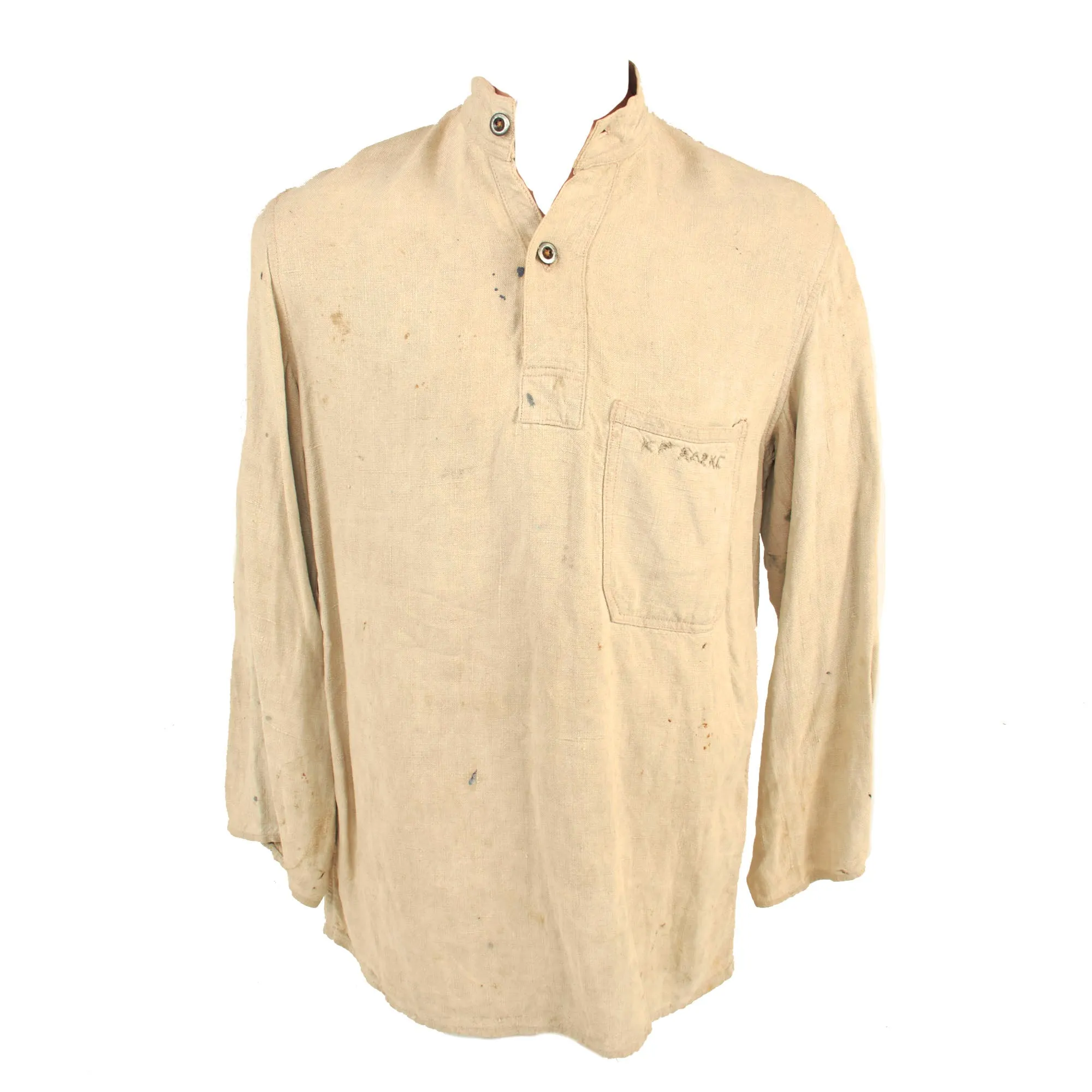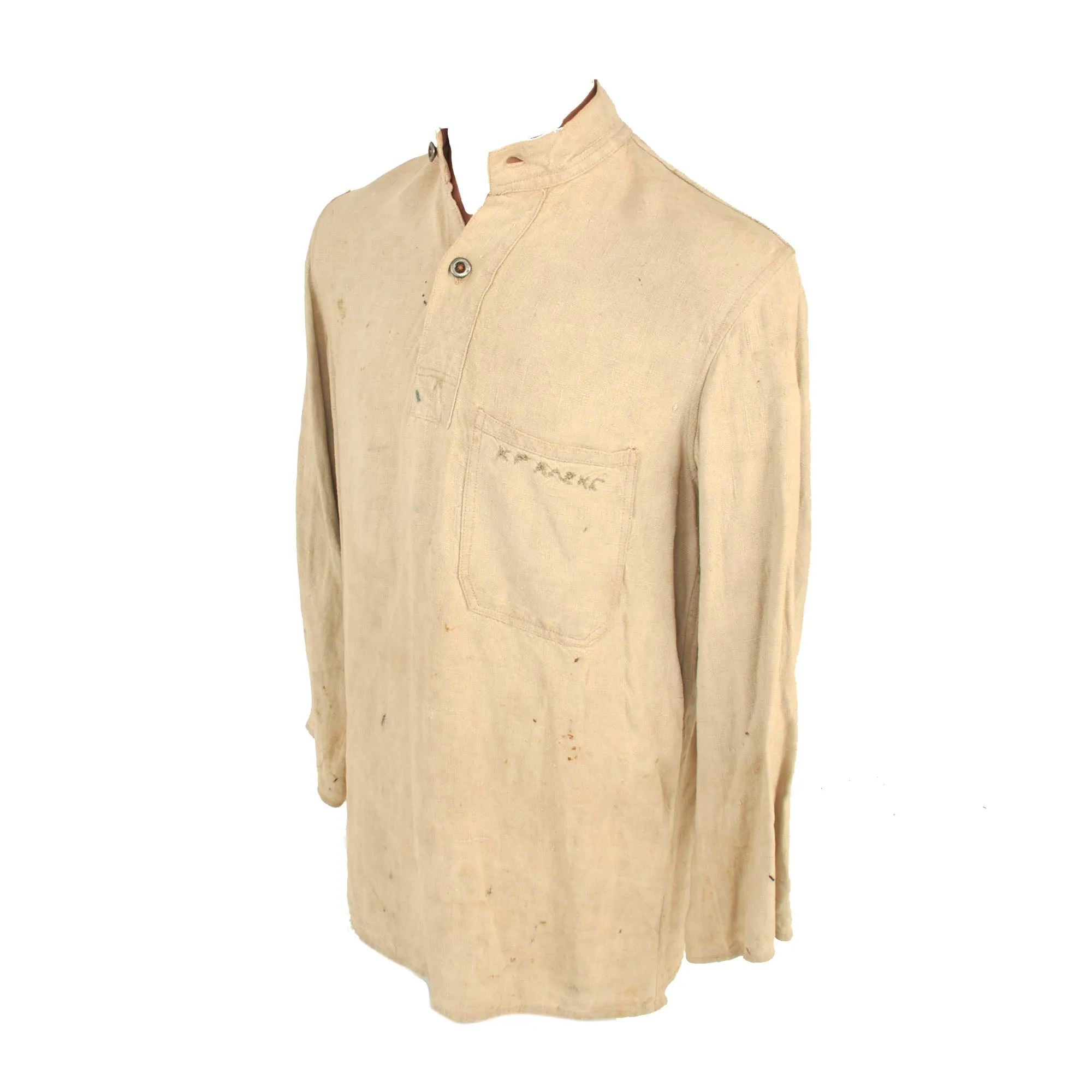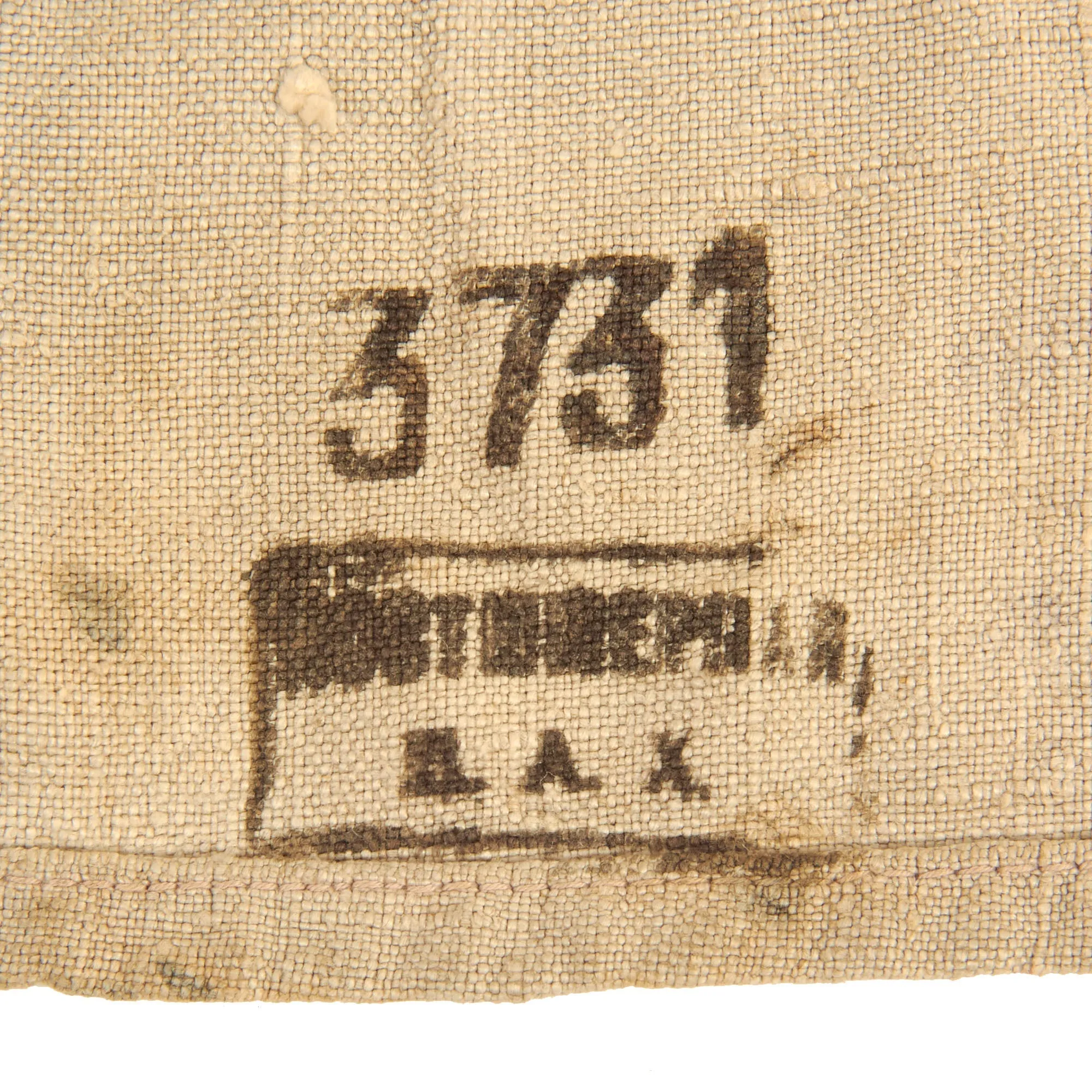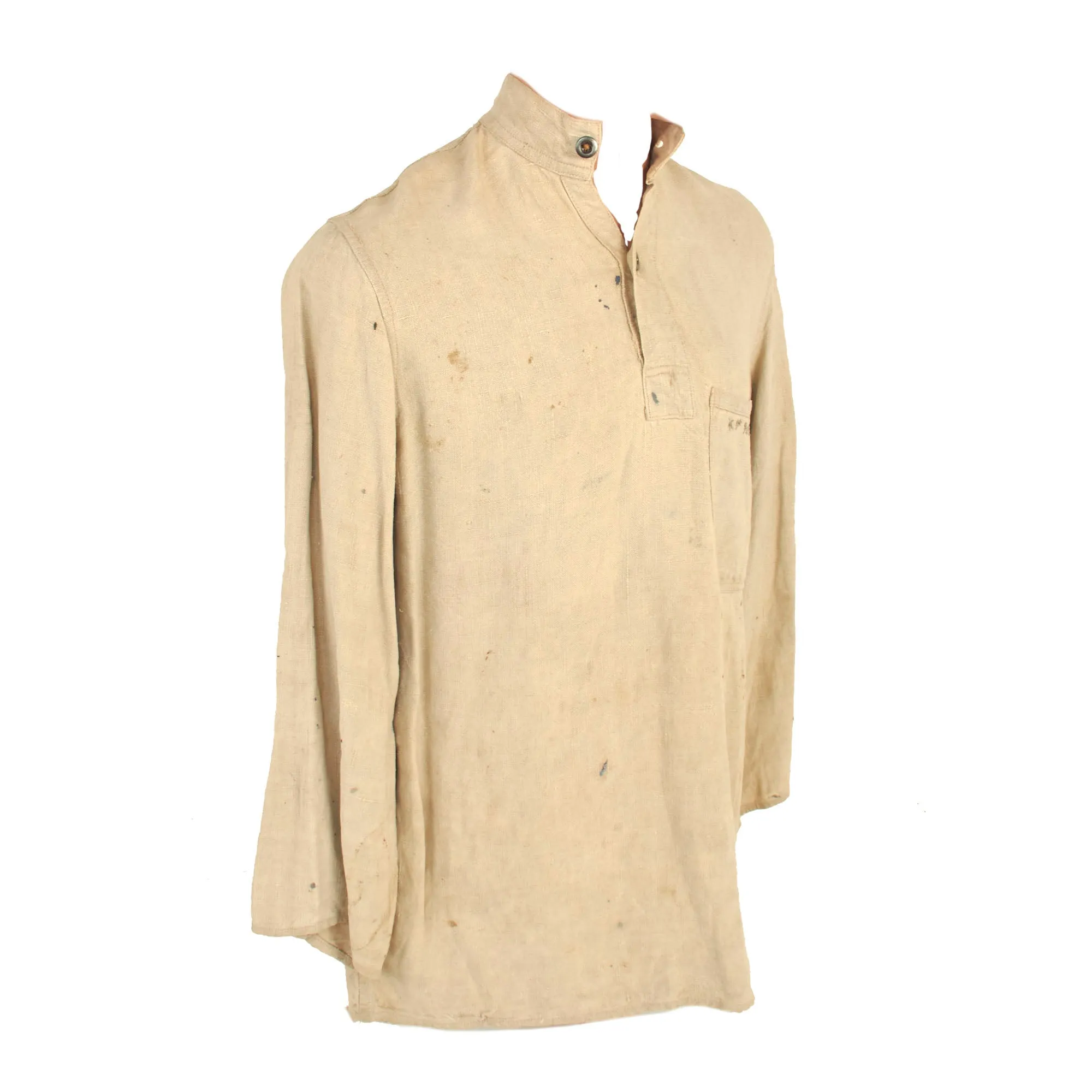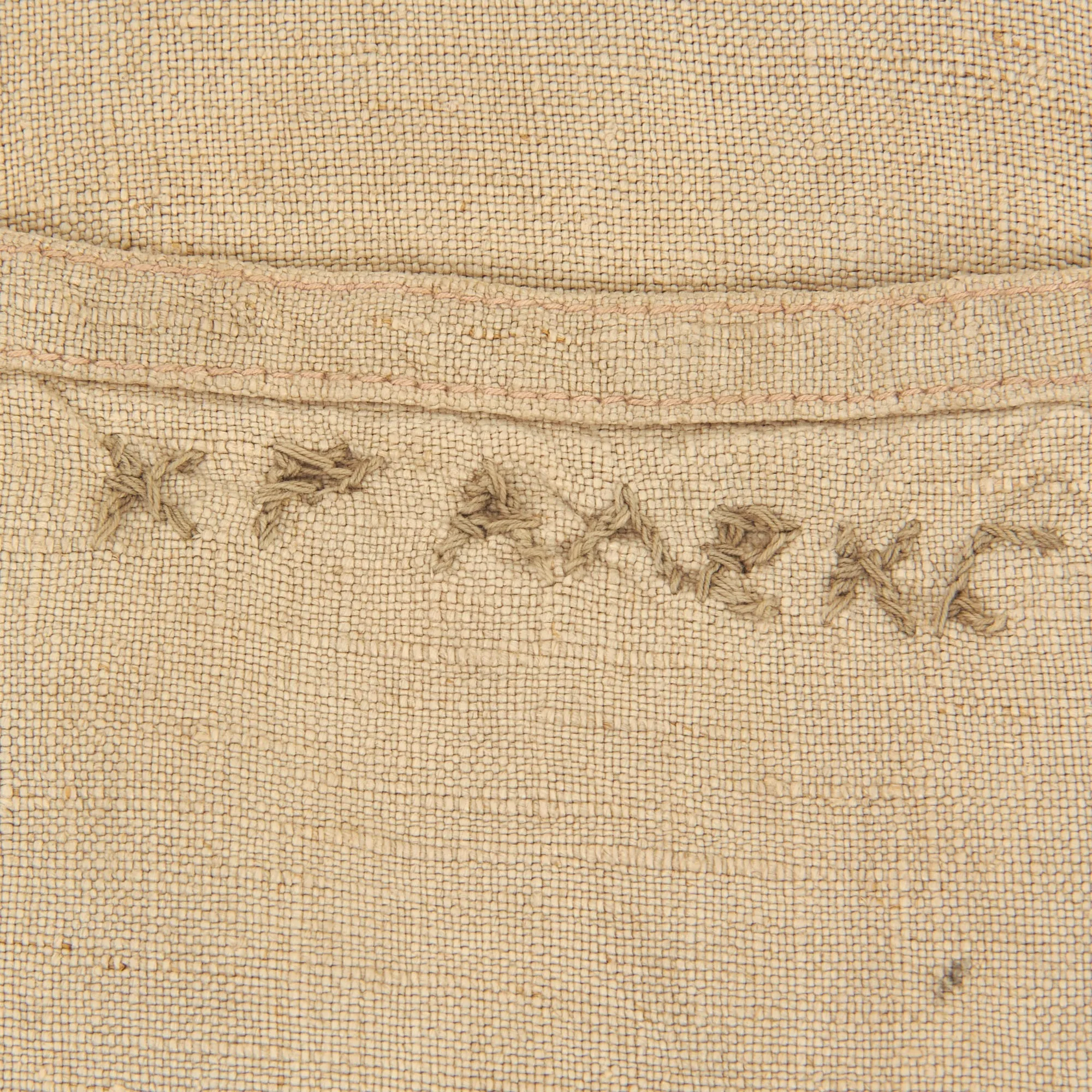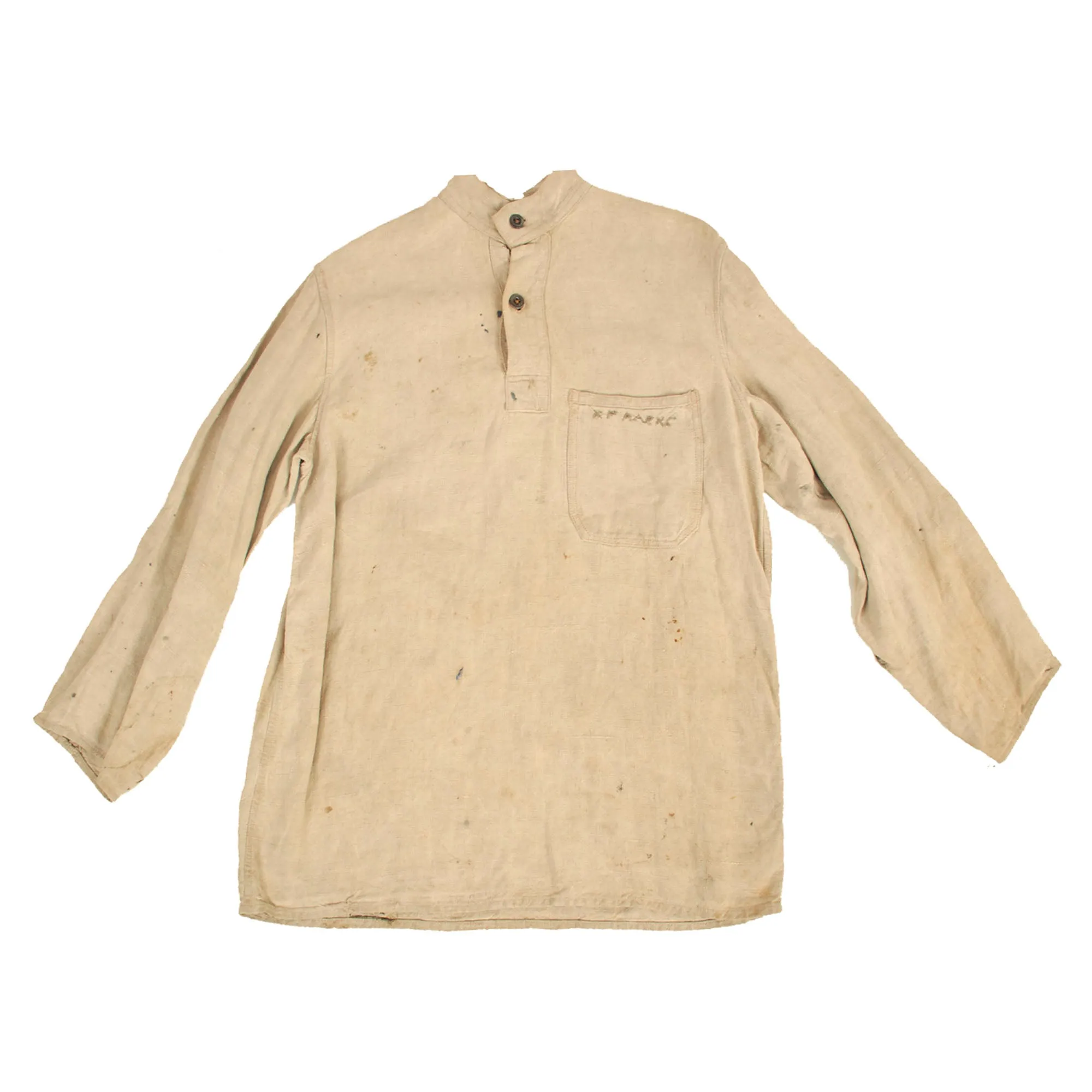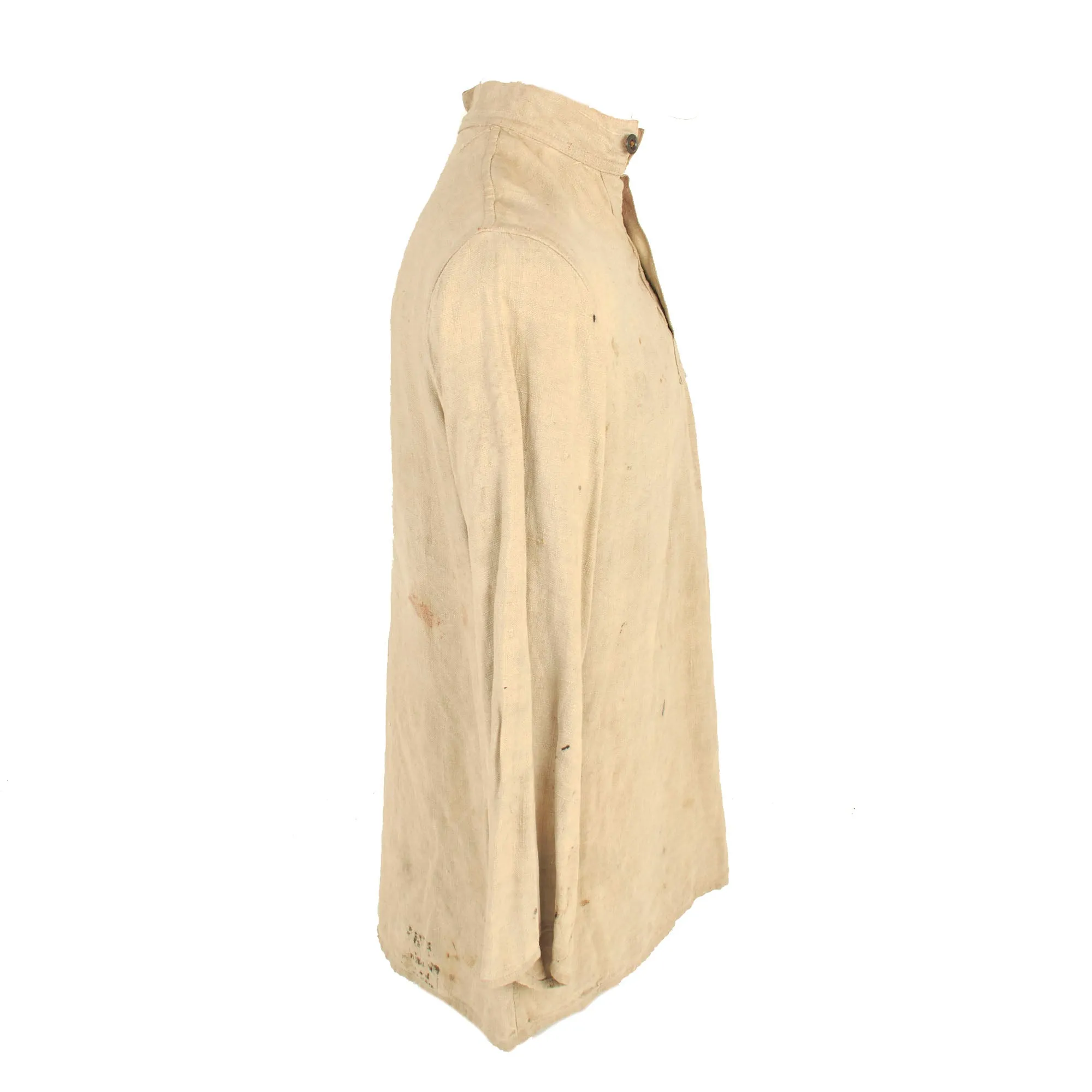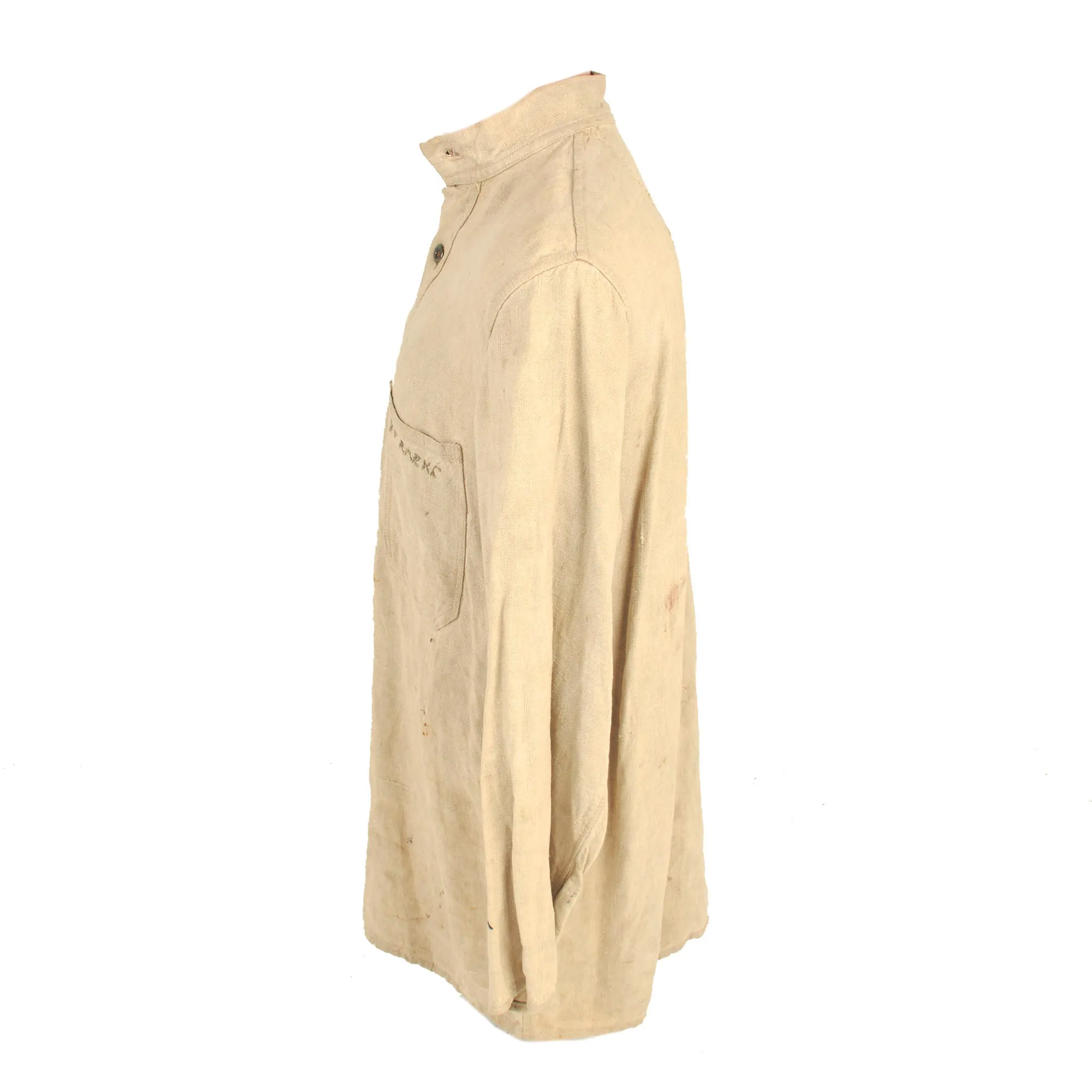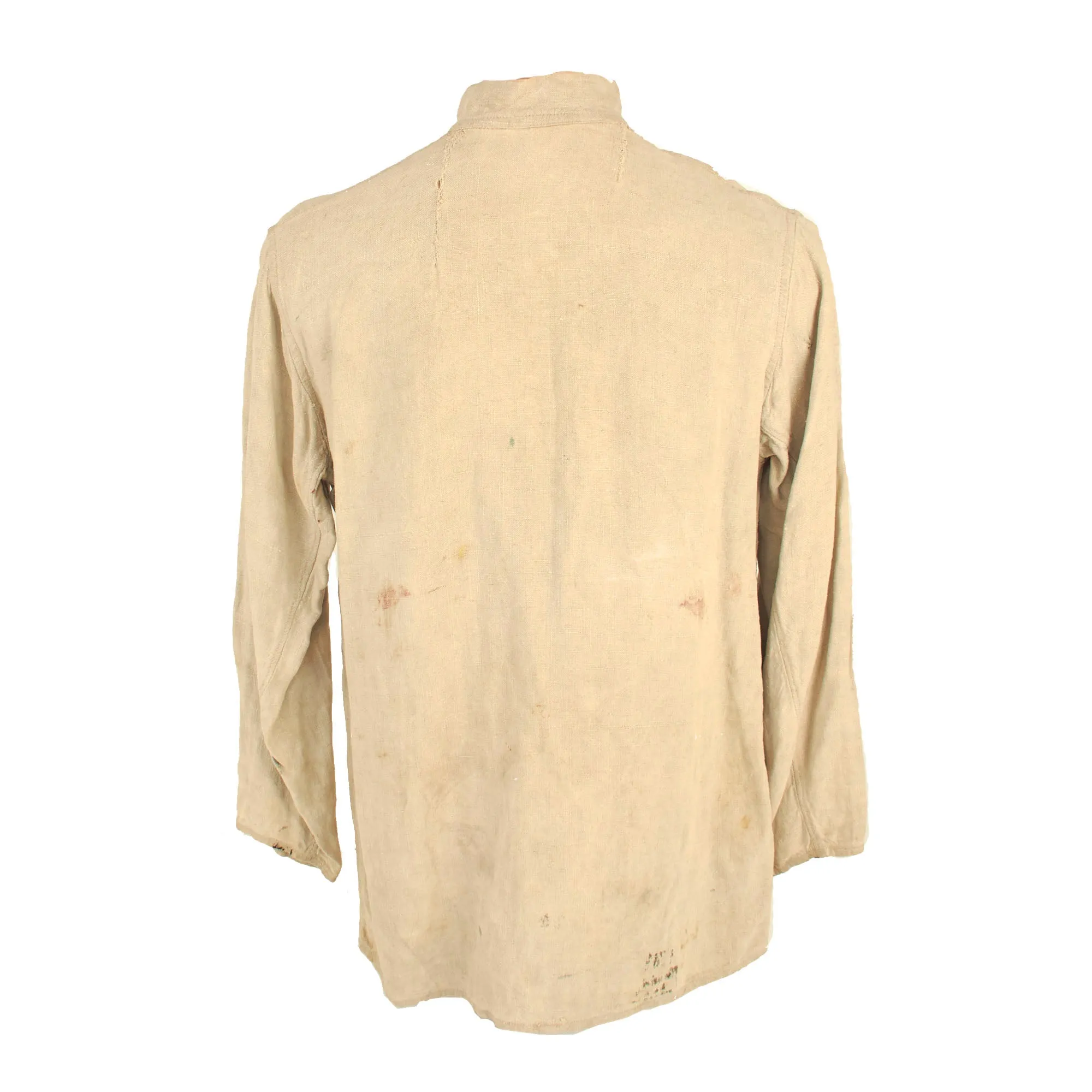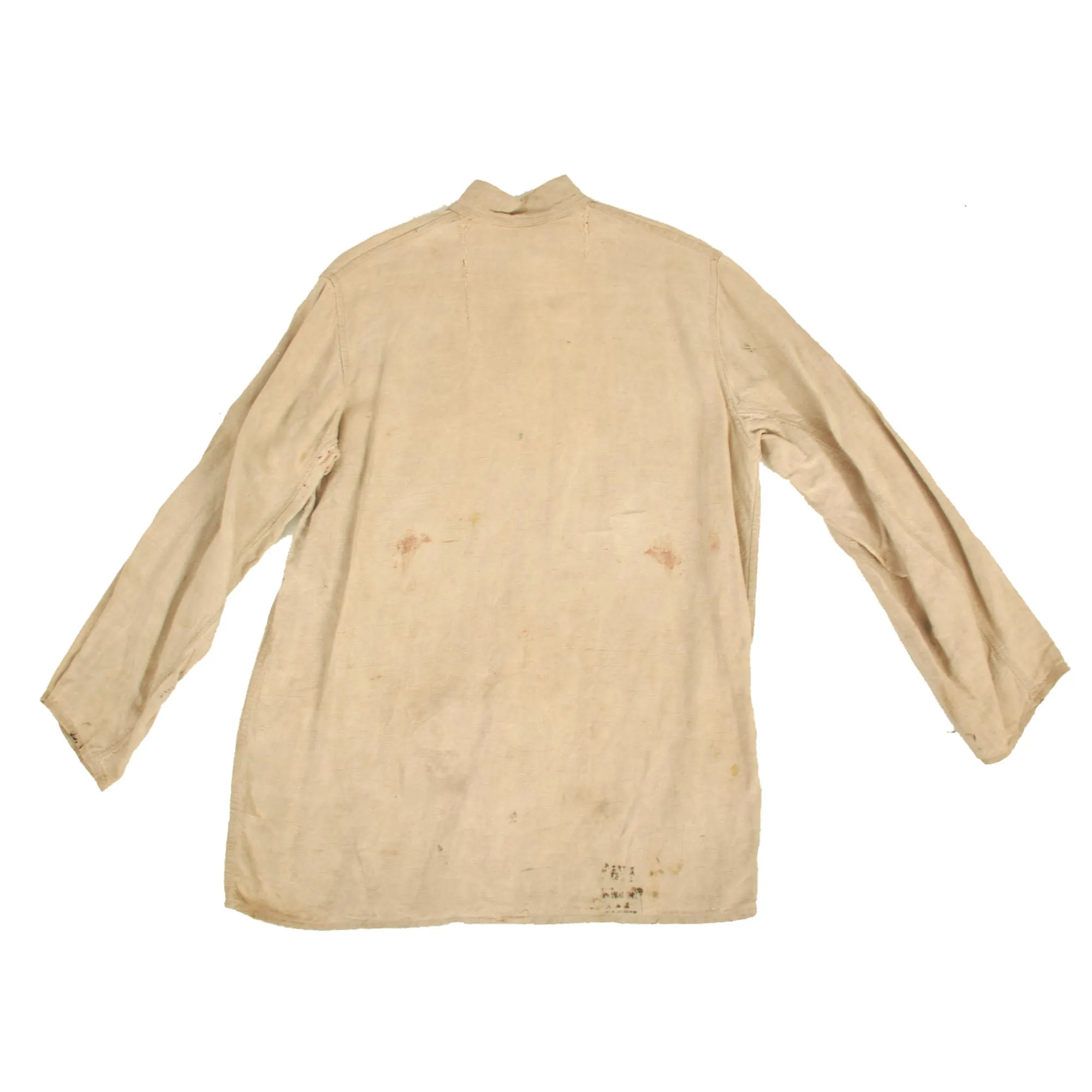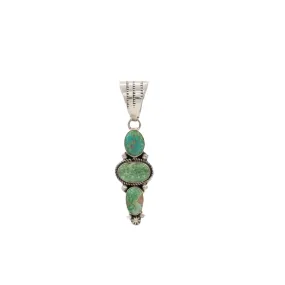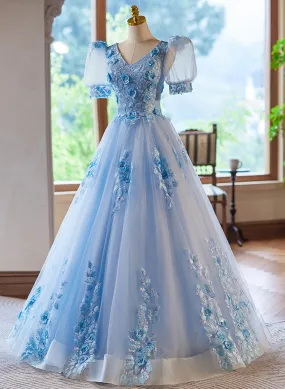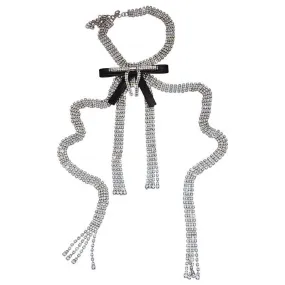Original Item: Only One Available. Now this is a wonderful example of the iconic Gymnastyorka. The tunic is in wonderful condition and shows signs of little to no wear. This example appears to be an issued one and would be very difficult to upgrade from! All buttons are present and there is a depot stamp present on the lower inside front but unfortunately the ink bled and made it rather difficult to read.
Gymnastyorka was a Russian military smock comprising a pullover-style garment with a standing collar having double button closure. Additionally, one or two upper chest pockets, with or without flaps, may have been worn. It had provision for shoulder boards and sometimes reinforced elbows and cuffs. The Tsarist version had the standing collar while the M35 version had a stand-and-fall collar which was replaced with the standing collar in the M43 version. The Soviet Military M35 version usually had hidden buttons. A double breasted version (kitel) for officers of all ranks existed during the Tsarist period.
The gymnastyorka was originally introduced into the Imperial Russian Army in about 1870 for wear by regiments stationed in Turkestan during the hot summers. It took the form of a loose fitting white linen "shirt-tunic" and included the coloured shoulder-boards of the dark green tunic worn during the remainder of the year. The gymnastyorka was taken into use by all branches of the Imperial Russian Army at the time of the Russo-Turkish War of 1877–1878. Originally intended as a working dress during peacetime and patterned on the traditional Russian peasant smock, the gymnastyorka was subsequently adopted for ordinary duties and active service wear. It was worn as such by non-commissioned ranks in summer during the 1890s and early 1900s. The officers' equivalent was a white double breasted tunic or kitel. During the Russo-Japanese War of 1904–1905 the white gymnastyorka with its red or blue shoulder-boards proved too conspicuous against modern weaponry and the garments were often dyed various shades of khaki. The smartness and comfort of the white gymnastyorka enabled it to survive for a few more years of peacetime wear until a light khaki version was adopted in 1907-09 and worn during World War I.
Approximate Measurements:
Collar to shoulder: 10"
Shoulder to sleeve: 22”
Shoulder to shoulder: 18”
Chest width: 20.5"
Waist width: 21"
Hip width: 21”
Front length: 30."
A great example ready for further research and display.




